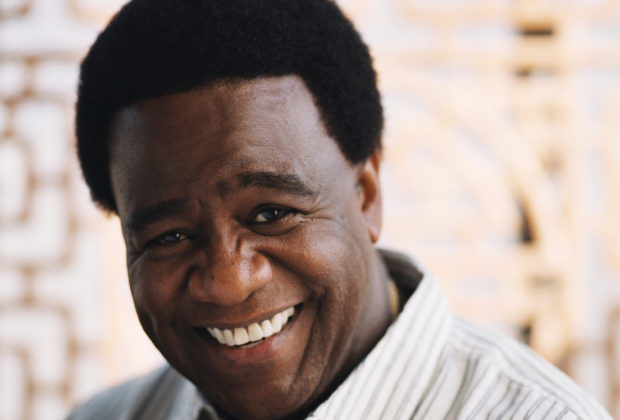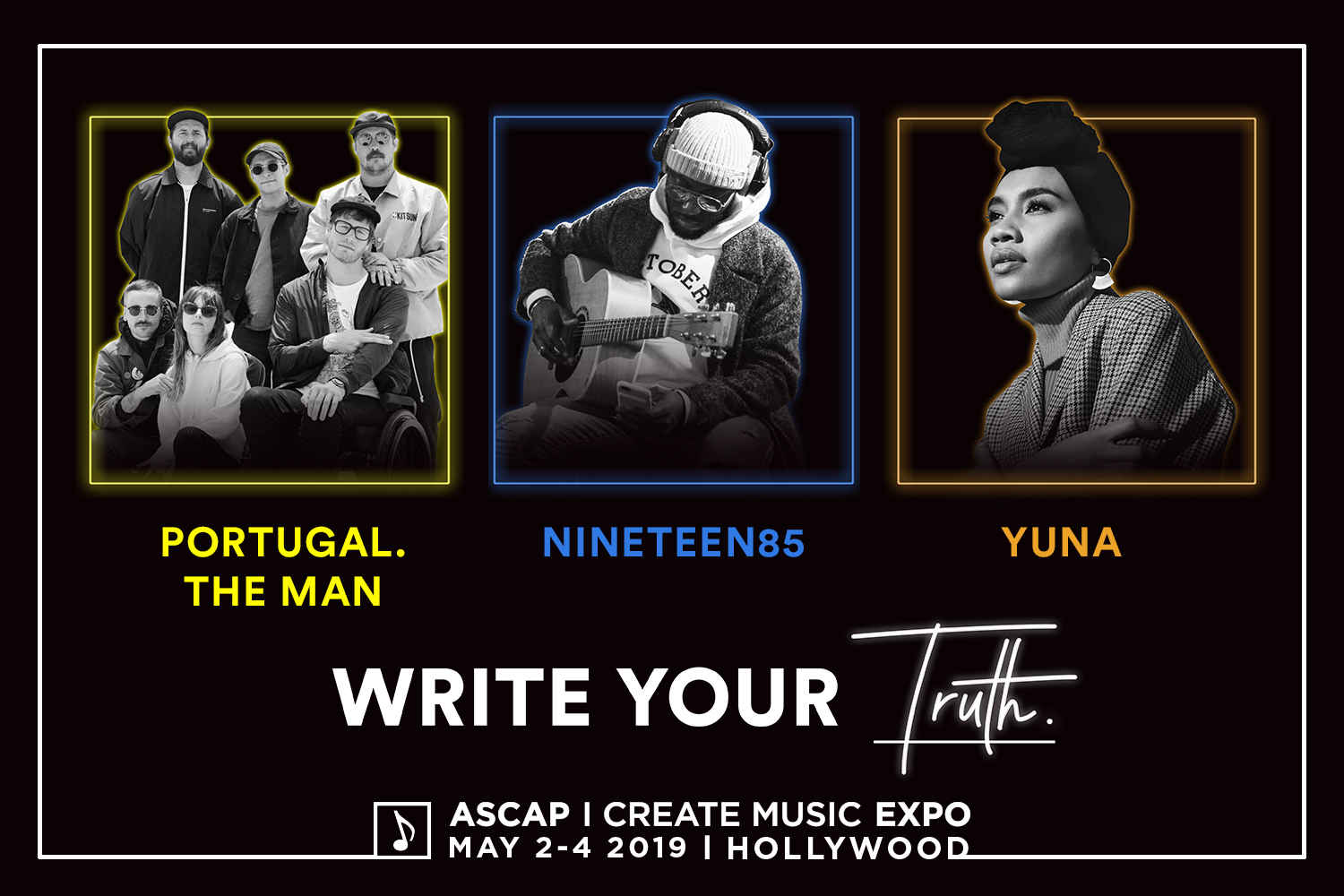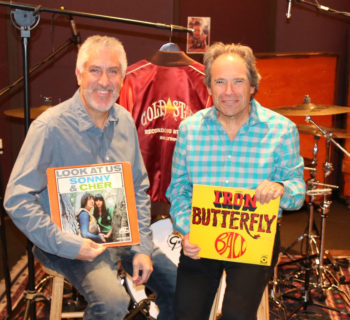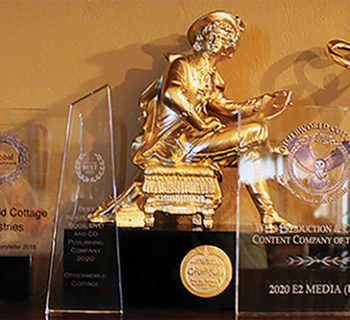Singer/songwriter Al Green is embarking on a US tour that starts in Austin Texas on April 24th and concludes May 9th in Los Angeles at the Greek Theatre. He doesn’t come around too often so check him out if you can.
The last time I caught Al Green was at the Greek Theatre in 1974. David Bowie was in attendance. We were both impressed by Green and his band. A short but potent set of tunes was displayed in front of us at this famed venue.
Today, Reverend Al Green dedicates his time to his ministry in his hometown of Memphis, Tennessee.
With a highly successful recording and touring career that spans over five decades, Al Green’s musical roots originate in Memphis, but he has made an undeniable and lasting impact on music and musicians around the world from R&B, Soul, and Pop to Blues and Gospel.
Throughout his career, he has earned a long list of hit albums and singles starting with his breakthrough release Al Green Gets Next To You in 1970 featuring his first Top 10 hit single “Tired of Being Alone,” and 1972’s Let’s Stay Together which reached No. 1 on the Top R&B Albums chart and No. 8 on the Billboard 200 with the title track hitting No. 1 on both the Hot 100 and Top R&B charts concurrently.
Green continued his chart success with back to back hits including 1972’s platinum selling album I’m Still in Love With You, 1973’s Call Me, featuring the hit single “You Ought To Be With Me,” 1973’s Livin’ For You, 1974’s gold selling Al Green Explores Your Mind and 1975’s Al Green is Love, all hitting No. 1 on Billboard’s Top R&B chart plus the Top 20 R&B hit albums Full of Fire (1976) and 1977’s Have A Good Time.
In 1975, Al Green released his platinum selling collection Al Green’s Greatest Hits which reached top 20 on Billboard’s Top 200 and No. 3 on the Top R&B chart, and packed with hits including “Let’s Stay Together,” “Call Me (Come Back Home),” “How Can You Mend A Broken Heart” and “Tired of Being Alone.”
In the 80s, the now Reverend Al Green returned to the music he was raised on, and for the next decade, he focused on Gospel music. His first Gospel album was The Lord Will Make A Way. His fans followed his new path and he continued his chart success with 1983s I’ll Rise Again, which hit No. 4 on the Top Gospel Albums chart, garnered a Top 10 hit album with Trust In God, and 1987’s Soul Survivor, reached No. 1 on the Top Gospel Albums.
He returned to pop music with I Can’t Stop (2003) and 2008’s Lay It Down, put Green back on the pop meter with a No. 9 and No. 3 on the Top R&B chart.
Al Green continues to receive praise and accolades most recently being celebrated in Washington D.C. at the Kennedy Center Honors in 2014. In 1995 he was inducted into the Rock And Roll Hall Of Fame.
In 2018, he recorded and released “Before The Next Teardrop Falls,” his first single in almost 10 years.
Rolling Stone magazine listed him as one of the 100 Greatest Artists of All Time while the music site Pitchfork proclaimed Al Green as “The Greatest Living Soul Singer.” Behind Al Green’s ascension in the 1970’s hit parade was the hands-on addition of Hi Records producer/bandleader/trumpeter Willie Mitchell who since the mid-‘60’s veered the label into state-of-the-art R&B recordings.
Al Green, Don Bryant, Ann Peebles, Willie Jackson, O.V. Wright, Syl Johnson, Otis Clay, Bill Black and many more were part of the Hi Records stable, launched in 1956 initially as a rockabilly and instrumental label.
Mitchell and his band provided the musical entertainment at several New Year’s Eve parties for Elvis Presley at his Graceland home in Tennessee. The Beatles on a 1964 U.S. tour stop met Mitchell at his Royal Studio when the Bill Black Combo opened a show for them.
In 1968 Mitchell had his own instrumental top 40 single in the U.S. charts “Soul Serenade” on the Hi Records label. It was a cover of a jazz tune penned by King Curtis and Luther Dixon initially cut by Curtis in 1964 for Capitol Records. I saw Mitchell and his band in Orange County at a Disneyland stage in the late sixties.
The timelessly sensual groove of soul singer Al Green and the Hi Records Memphis sound has been released, re-packaged and downloaded for years.
For those seeking an introduction to Green’s catalog or a compilation of his hits, seek out a four- CD set The Immortal Soul of Al Green.
There’s also a three-CD package Hi Times: The R&B Years focused on a magical era with church-soaked vocals and soaring falsetto leads underlined by the almost-mathematical production work of Willie Mitchell and the Hi Rhythm Band featuring Charles Hodges organ, Leroy Hodges bass, Mabon “Teenie” Hodges guitar, drummers Howard Grimes and Al Jackson Jr. with assistance of trumpeter Wayne Jackson and saxophonist Andrew Love of the Memphis Horns.
In 2009, the Fat Possum label licensed the Hi Records catalog.
“Ann Peebles’ smoky voice really got the blood boiling,” volunteered Paul Body, an L.A. based drummer/writer.
“I remember the first time I heard ‘I Can’t Stand The Rain’ during the fall of ’73. It really knocked me out because it sounded so mysterious. It sounded like she was channeling Ma Rainey. It was way too bluesy for the soul station back then but it was a huge hit. I saw later and she was a juke joint hot with the Hi band pumping the groove behind her.
“I was there that night at the Troubadour club when John Lennon was yelling out what he would like to do to Ann Peebles. Although he was rude and crude I knew where he was coming from.
“All I can say about Al Green and Teenie Hodges is that they wrote ‘Love and Happiness,’ one of the all-time groove songs. Man, that thing just smoked. It might have been the best song that they ever wrote together. I remember listening to it up the Russian River thirty odd years ago and it blew the roof off the pad.
“I saw Teenie Hodges once in person and he was a small cat but he could make that soul music rumble. He didn’t strangle a guitar like a lot of guys did back then. He caressed it just like a woman.
“Those early Al Green and Willie Mitchell things were so locomotive. Some of the time they sounded like a southbound train and other times they percolated like hot coffee,” suggested Body.
“Willie Mitchell had the coolest drum sound happening,” Paul reinforced. “Have to give Al Jackson, Jr. and Howard Grimes their props. They were the engine that made that groove happen. Marvin Gaye and Stevie Wonder got all the glory in the 70’s but Willie and Al had the soul, blood and guts. Without them the 70’s would have been the early ‘50’s.”
“I first became aware of Willie Mitchell,” added multi-instrumentalist Chris Darrow “like most people, through Al Green and Ann Peebles records. In my estimation ‘I Can’t Stand The Rain’ is one of the most perfect records ever made. The driving grooves and the dark, yet effective, tonality really got to me.
“However it was the album Total Explosion, by Syl Johnson, a great overlooked singer, who really turned me on. He was a funkier, a more raw version of Al Green, who played the harmonica. I think his raspy voice and harder approach got to me more than the prettier Al Green records. But it was always the rhythm section that set the tone of the Hi Records albums.”
Since the late seventies, Mitchell worked with Rod Stewart, Solomon Burke, Buddy Guy and My Morning Jacket at his Memphis-based Royal Studios.
The facility was the site of several sessions for Stewart’s Atlantic Crossing solo LP and Keith Richards’s debut solo album Talk is Cheap that is now being reissued March 29th with six bonus selections.
In the May 2001 issue of MOJO magazine, writer Robert Gordon described the Hi Studio which was built as a movie house in 1915 and converted in 1957 to Royal Studios when it became the home of the Hi Records label and the Hi Rhythm Section.
“The Hi Studio is located in an old movie theatre, the Royal. The control room used to be in the projection booth but has moved to the back of the studio floor, which still slopes. They began with a two-track machine and by the time they were done with Al Green’s hits, they’d linked four together, wired so that only two machines-four tracks-could record simultaneously. Willie Mitchell was innovative and exacting, and achieved his multi-layered sound with antiquated equipment.” Mitchell favored RCA ribbon microphones.
Since Willie Mitchell’s 2010 death, Marc Ronson and Bruno Mars recorded the smash hit “Uptown Funk” at Royal Studios. Engineer Lawrence “Boo” Mitchell, Willie’s son, won a Grammy for his work on “Uptown Funk,” while Ronson produced the bulk of his Uptown Special in 2015 at Royal. Robert Plant, Paul Rogers, Elton John, and Snoop Dogg have cut tracks in the fabled room.
In 2004 I conducted a phone interview with Willie Mitchell in Memphis, Tennessee.
In my conversation with Mitchell, we discussed his landmark recording and production career, Hi Records, and life in the studio with his most important talent vocal discovery the former Albert Greene, pka Al Green.
A small portion of our interview was quoted in author Jimmy McDonough’s book Soul Survivor: A Biography of Al Green.
HK: Where were you born?
WM: Ashland, Mississippi. My parents moved to Memphis when I was three. I studied music at Melrose High and then Rust College. Before I went to college, there was a Memphis musician named Onzie Horn, whom I lived with for a while when I was 16. He showed me the Schillinger system (a music method) he had learned in Chicago. He studied with Billy Strayhorn and Quincy Jones.
Q: You were around Hi Records for years before they let you get close to the recording console.
A: I had done an album with O.V. Wright, Eight Men and Four Women which became a huge R&B smash for Don Robey and Duke/Peacock Records. Then they sent me Bobby “Blue” Bland and I did an album with them. Then more people began to come. Charlie and Inez Foxx and I would always say to Joe, ‘I don’t like the sounds I’m getting out of this place. We can do better than this.’
I told them I wanted to run the board. For my first session, I cut “Soul Serenade,” which turned out to be a big R&B and pop record. King Curtis had had a pretty good hit on it. I said “we’re gonna do it funky and simple.” It became a huge hit.
Then we started working with Ann Peebles. A trumpet player, Gene “Bowlegs” Miller, brought her up to me and said, “Willie, this girl has a good voice.” I told him, “All she needs is material.” So we went into the studio with her and the first record went around 100,000. She became popular on the blues and R&B market. This was before Al Green.
Q: There is almost a mathematical production style and the way you employ sparse instrumentation on many of the recordings we’ve heard the last 30 years. I know the Schllinger system involved music notes as mathematics. From listening to these Hi Records recordings, I noticed you used big, semi-jazz chords in your charts.
A: When I began work with Al Green, I applied some of those different things. Especially on “I’m Still In Love With You.” You’ll find lots of those big chords there. I used freak chords on “Let’s Stay Together.”
Al would come to the house and eat and sleep. My wife cooked for him. I used to play him records and say, “Listen to the notes and how they are posted.” In fact, Al and I used to spend as much as 10-15 hours a day just studying.
Q: How did you first meet Al Green in 1968?
A: We were booked in Midland, Texas. It was a real hot day. 109 degrees in the shade. It was a huge club that seated 2,500 people. When I pulled in, Al Green came up to me and said, ‘Hey man, I’m stranded here. Could I sing a couple of songs? You could give me enough money to get me back home to Michigan.’ So I let him and Al starts singing a Sam & Dave song when we were going over what songs we were gonna do. I was gonna give him $50.00.
Then he starts singing and I told my brother, “Hold the band a minute.” I said, “Come over here, kid. Man, you got a great voice. Why don’t you go back to Memphis with me? We got a little label called Hi Records and we can cut some records.” And he said, “Well, how long will it take for me to be a star?” I told him about 18 months. He said, “I don’t have that long.”
So we played the gig that night. I was really amazed at his voice. The way he sounded. The way he delivered a song. So after the gig, we were packing up the bus and a car had blocked the driveway and we couldn’t leave. We were sitting there ready to go.
So there’s a knock on my window. “Hey man, you said it would take 18 months for me to become a star.” I said, “Somewhere in that area.” He said, “Nah. I’m not going.” Then the car in front of me got started and we went to pull out and he said, “Yeah, I’m going.”
So he came to Memphis. We are about ten minutes from Memphis, about to cross the bridge and he says, “I have to go back to Grand Rapids, Michigan…I‘m gonna need some money.” “Uh-oh. Here it comes.” ‘To get myself straight in Grand Rapids so I can come back and work, I’ll need $1,500.00.” That was big money in 1969. So I said, “O.K. kid, I’m gonna give you this money. Now go back, straighten yourself out and come back.”
He was real cocky, but I liked his attitude. I put him on the bus and three months later, I would think, “That little…took my money and I don’t even have an address or phone number with his name.”
Then one night, we played a college in Louisville, Kentucky, came home at 6:30 a.m. and somebody starts bangin’ on the door and Al Green is standing there. I let him in and showed him where he needed to go. He said, “‘Don’t you remember me? I’m Al Green.” I had forgotten him. He had my money. I got him an apartment, but he was getting frustrated.
He cut a version of the Beatles’ “I Want To Hold Your Hand.” We came up with a thing called “You Said,” which did about 100,000. I wasn’t satisfied with that. I said, “We’re off on a Sly Stone groove and we’ve got to find our own thing.”
Q: What was the initial session like in 1970?
A: He was singing too hard. I told him he had to soften down. Then we cut a version of the Temptations’ “I Can’t Get Next To You.” that did about 700,000. It showed that he was still singing hard but he had such command. That sort of launched him into getting some gigs. Then we started cutting an album, Green Is Blue. He was up in Detroit and brought in this song, “Tired Of Being Alone.” And when I heard the song, I knew that was gonna be it.
It hung around February to July and we sold about 900 of ‘em. And I said, “I can’t be this wrong. This song was gonna be a hit.” So I went to Atlanta, Georgia to radio station WAOK. I sat with the DJ and the record busted there. We did 30,000 the first week. I called back to Memphis at WGIA, who I dropped the record already and told them, “We got somethin’ goin’ on.” Then I went to New York and all hell broke loose. It ended up doing 1.5 million. I told Al, “You’ve been singing hard.”
Q: I always heard that when Al was in England on his first tour, you really developed your own sound for him at that point back home.
A: When Al was in England, I came up with the melody for “Let’s Stay Together.” When he came back, we would stay at the piano from 9 in the morning until 11 at night. Just a piano and a tape recorder and he’d sing. In 15 minutes, all the lyrics were down for “Let’s Stay Together.” I was getting’ hot. I wanted 500,000 copies pressed on “Let’s Stay Together.” They thought I was crazy. The record came out on Monday and by Thursday it was gold. Then, “Call Me.”
Q: What were Al Green’s greatest strengths in the recording process?
A: The main thing is, Al could sing in tune. Once he got a hook on a song, it was hard to beat him. The song was dead. We had six years of nothing but gold and platinum records with Al. Then we finally hit with Ann Peebles’ “I Can’t Stand The Rain.” That was good. Did some really good stuff with Syl Johnson. We did the rhythm tracks, Al Green or whoever would sing their part, and we’d build from that.
Q: I’m amazed listening to the drum sounds on your productions, with Al Jackson’s pulsating drums and Howard Grimes on conga. The songs still jump out of the radio.
A: Al Jackson was my drummer until his death. Howard Grimes had cut for Stax, recorded with Rufus Thomas and still worked with me. Every time I cut Al Green, I would have both Howard and Al on hand to play.
HARVEY KUBERNIK is an author of 15 books. His literary and music anthology Inside Cave Hollywood: The Harvey Kubernik Music InnerViews and InterViews Collection Vol. 1, was published in December 2017, by Cave Hollywood. Kubernik’s The Doors Summer’s Gone was published by Other World Cottage Industries in February 2018.
Harvey Kubernik’s The Doors: Summer's Gone has been nominated for the 2019 Association for Recorded Sound Collections Awards for Excellence in Historical Recorded Sound Research.
During December 2018, Sterling/Barnes and Noble published Harvey Kubernik and Kenneth Kubernik’s The Story of The Band From Big Pink to the Last Waltz.
This century Harvey penned the liner note booklets to the CD re-releases of Carole King’s Tapestry, Elvis Presley The ’68 Comeback Special, The Ramones’ End of the Century and Allen Ginsberg’s Kaddish.
Kubernik’s writings have been printed in several book anthologies, including The Rolling Stone Book of the Beats and Drinking with Bukowski. He is the project coordinator of the recording set The Jack Kerouac Collection.
In November 2006, Harvey Kubernik was a featured speaker discussing audiotape preservation and archiving at special hearings called by The Library of Congress and held in Hollywood, California. In spring 2019 he will be writing an essay on the topic of The Band by The Band for the Library of Congress and their National Recording Registry annual twenty-five recordings that are permanently archived in the nation’s library. For more, visit cavehollywood.com.














